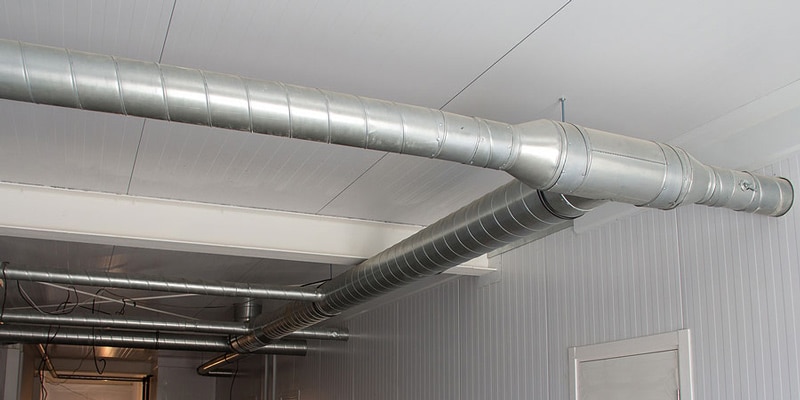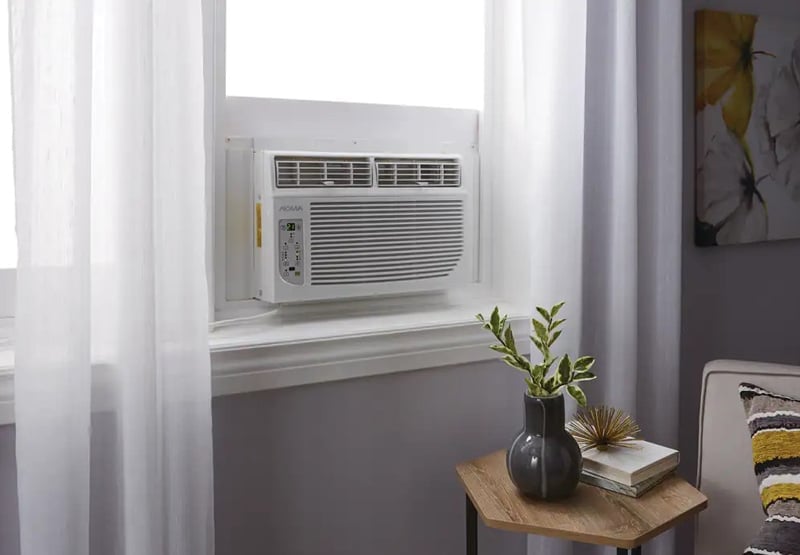We've independently reviewed this article to make sure it's as accurate as we can make it.
To find out more about our article creation and review process, check out our editorial guidelines.
Has the time come to update or finally add air conditioning to your home? If you have a house, you have a lot of options to choose from. One that you may not be familiar with is high velocity air conditioning.
What is high velocity air conditioning, and should you consider it as one of your options?
High velocity air conditioners function much like more traditional HVAC systems. Depending on where you live, you would have a heat pump or compressor located outside that circulates refrigerant to the indoor coil of the high-velocity system. A special blower then distributes the cool air through small ducts that feed the space.
That’s the quick answer – but read on for more details!
How High Velocity Air Conditioning Works
High velocity systems use a method known as aspiration to cool your home. You’ve likely heard aspiration used with regards to how we breathe. Here’s the HVAC definition.
“Air is discharged at a high velocity from our outlets and creates a vacuum, and the air is then pulled [back] into the [system] and creates a blend of conditioned air.”

If you have a traditional central air system or forced air heating, you will have big metal ducts throughout your house. If you have an unfinished basement, you’ve seen them hanging from the ceiling.
High velocity ductwork is something much different. It’s made from flexible mini ducts that feed to vents that are less than half the size of traditional, rectangular floor or ceiling vents.
Even better than their smaller size, they are much more efficient. According to Energy Star traditional residential ductwork loses between 20 to 30% of the air that moves through them with two leaks, holes, and bad connections.
That means the typical household could be losing nearly a third of its conditioned air, whether warm or cold.
Based on this alone, high velocity air conditioners are more efficient than their counterparts. They have duct fittings that are virtually leak free. (Note that the unit itself isn’t more efficient, just the duct system).
Refrigerant is pumped through the ducts from your compressor to a high velocity air handler with much more pressure than a traditional HVAC system.
The biggest difference with High Velocity Air Conditioning is that the fan is more powerful than a traditional system. Which means it can push the air through smaller ducts. The supply registers don’t need to go underneath windows, and can be put behind doors – as the velocity of the air means it will still distribute throughout the whole room.
Thanks to this higher pressure, once the air exits the vents in a room it circulates much quicker, cooling the room temperature quicker.
Can High Velocity AC Be Used in Any Type of Home?
As with any type of HVAC, adding your choice of system to a new build is preferable. However, it’s also very easy to retrofit a system into your existing home—even if you don’t already have a traditional air conditioning unit installed.
Retrofitting is easy, primarily because of the small diameter tubing. Added to this, it’s extremely flexible, so it isn’t too difficult to fit between existing studs or ceiling rafters. They can even be snaked inside walls.
So you’re not looking at a significant renovation in order to install them.
If you don’t have existing central air conditioning, the process of installing a high velocity AC takes less work than a traditional AC, where 8-inch deep HVAC ducts need to be installed as well.
Weighing Up The Pros & Cons
So, is a high velocity air conditioner the right choice for you? Let’s see.
High Velocity Pros
| High Velocity Pros | Only choice for some older homes |
| Faster heat up and cool down times | |
| Quiet operation | |
| Smaller vents | |
| Cheaper to run during heating season |
- Only choice for some older homes. I’ve already mentioned some of the benefits of high velocity AC when it comes to the installation process. To expand on that, if you live in a much older home that doesn’t have space for traditional ductwork, then in terms of central air, high velocity is your only choice.
- Quiet in operation. Typically the last 3 feet of the ducts are sound attenuating, meaning that the systems are really quiet.
This is not an issue with high velocity air conditioning since room temperature adjusts very quickly.
- Cheaper to run during the heating season.During the heating months, you can adjust your temperatures higher without worrying about significantly increased costs. This is due to the fact thatthe system heats a room much quicker than a traditional unit—it ultimately runs for less time.
- Smaller vents.The smaller tubing means you no longer need large supply and return vents. There are many options for small, round outlets that can be painted or stained to match your decor.
High Velocity Cons
| High Velocity Cons | Unexpected installation costs |
| Blasting air | |
| Noise |
While the above may make it seem as though going the high velocity route is a no-brainer, there are some drawbacks.
- Unexpected installation costs. While it’s true that it’s typically less expensive to install a high velocity system in an older home without ductwork or in a new build, retrofitting some homes may be problematic.
- High cost. As well as installation costs, high velocity systems tend to cost significantly more than traditional.
Installation estimates are based on what an installer can see—no one is making holes in walls are ripping them down to see what’s behind them. So be prepared for an open estimate that allows for surprises.
Compared to Window Air Conditioners

A window air conditioner will cost less to install than a high velocity system. That’s about the only advantage.
Window air conditioners can be unsightly, block your view, and they’re noisy. And since they are location-based it’s unlikely a single window air conditioner will cool every corner of your home even if it’s rated for your square footage.
Compared to Ductless Air Conditioners (Mini-Splits)
Another alternative for those who don’t have ductwork is a mini split. While high velocity air conditioning does require tubing in place of ductwork, mini split systems only require a connection or conduit from the outdoor unit to the indoor unit.
From that aspect alone they are easier to install than a high velocity system.
However, the advantage of the high velocity system is that air is dispersed throughout the home through its tubing. In contrast, a mini split is better when you have zones that you want to cool. To cool multiple rooms you need to install multiple indoor units.
Conclusion
So what are the benefits of a high velocity HVAC system?
Let’s recap.
- Only choice for older homes
- Faster heat up and cool down times
- Cheaper to run during heating season
- Smaller vents
While all of this is great, you do pay a premium for a high velocity system.
Of course, there are times when this type of system will not be the right choice, so hopefully, this article has given you enough information to be able to make an educated decision.
While you’re here, why not check out our related posts below? Perhaps there is something else we can help you with.







